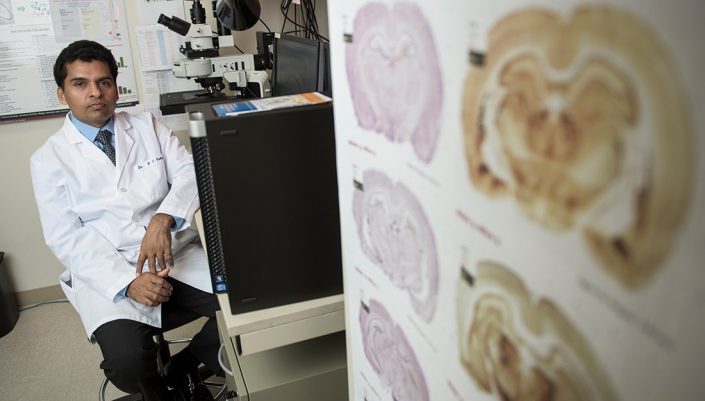A&M scientists ‘crack’ neuro-code for treating menstrual-linked epilepsy

Image: College of Medicine
A Texas A&M researcher in the College of Medicine has published what may be the first of its kind to use modern transgenic tools to investigate the age-old problem of hormonal seizures in women with epilepsy.
For the past two decades, D. Samba Reddy, professor of neuroscience and experimental therapeutics at the Texas A&M College of Medicine, has searched for answers to catamenial epilepsy, a subset of chronic epilepsy that causes a dramatic increase in seizures during women’s menstrual periods. Although this condition has been documented for millennia, there is currently no effective treatment for catamenial seizures, leaving many women and their families desperate for answers.
“Please help me,” one patient said in an email to Reddy. “I don’t have anywhere to turn.”
“I would really appreciate any help you could offer,” another said. “Even if I had to fly across the country to meet with you, I would.”
These distressed emails are a frequent occurrence for Reddy, whose research has been pivotal in cracking the basic neuronal code underlying catamenial epilepsy and mobilizing resources for researching this women-specific brain condition.
After piecing together hormone mechanisms, specific models, and therapeutic strategies in sequential projects, Reddy published his findings in the October 2017 issue of the Journal of Neuroscience Research. The paper is co-authored with doctoral student Bryan Clossen.
“We cracked the neuronal code of tonic inhibition, the electrical circuit shunting force mediated by extrasynaptic delta GABA-A receptors in the hippocampus, as the major regulator of the catamenial seizures,” Reddy said. “This opens up the possibility to start clinical trials that focus on treating catamenial epilepsy with synthetic neurosteroid agents that enhance tonic inhibition.”

